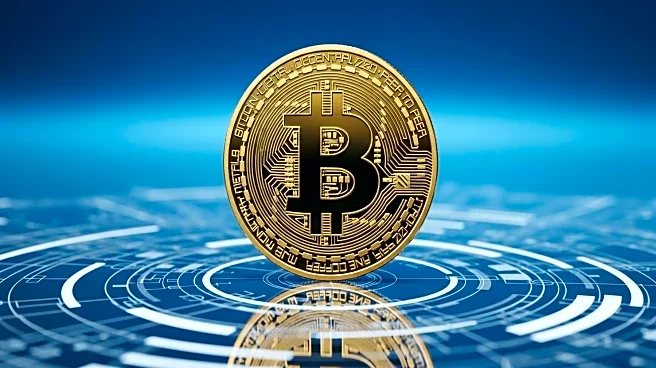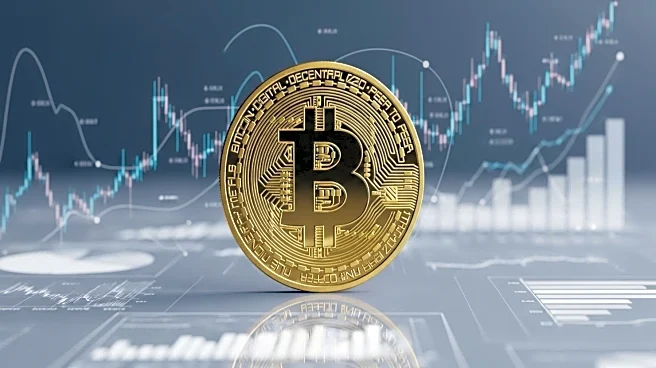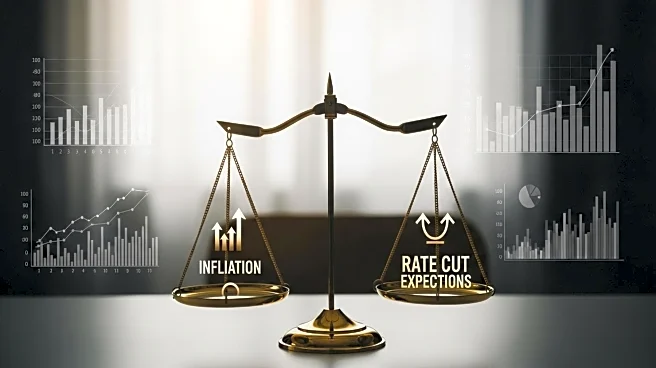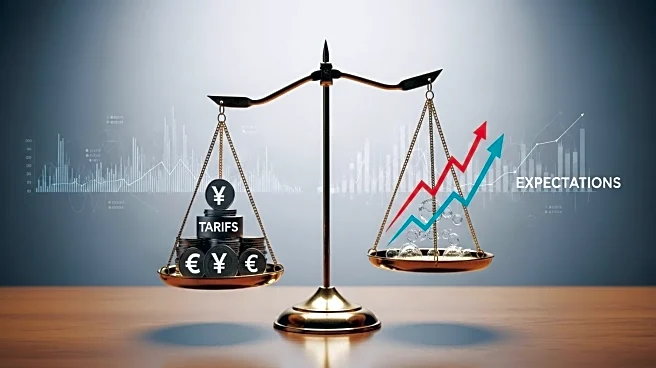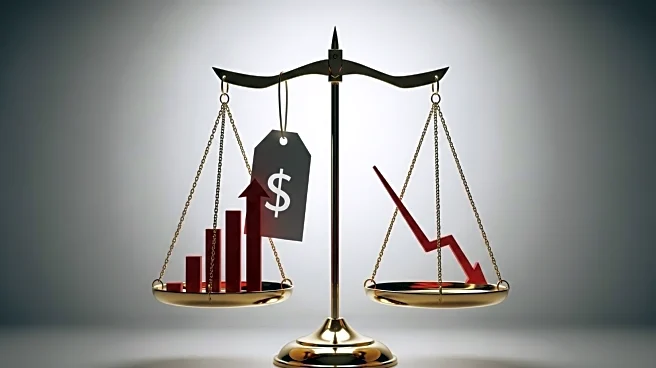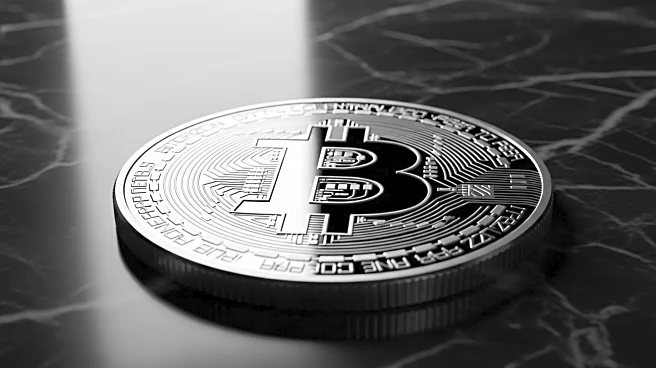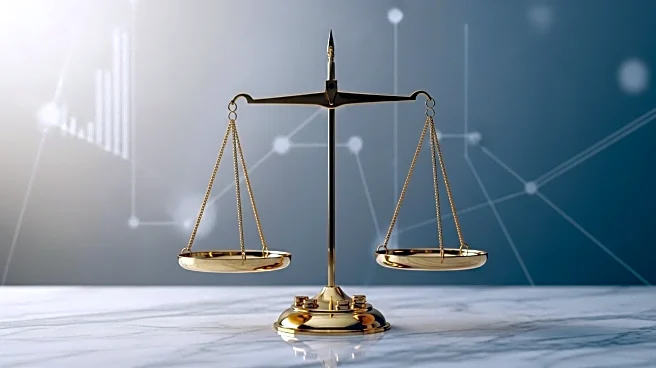What's Happening?
Bitcoin's position as an inflation hedge is under intense scrutiny as the Federal Reserve prepares for its September 2025 decision. The latest PCE data revealed a core inflation rate of 2.9% year-over-year, the highest since February 2025, while headline inflation remained at 2.6%. This situation presents a challenge for the Fed, which must balance inflation control with support for a slowing labor market. Bitcoin's performance has been mixed, showing positive returns after CPI shocks but weaker against Core PCE metrics. The cryptocurrency's volatility has surged, reflecting sensitivity to macroeconomic shifts.
Why It's Important?
The Fed's decision could significantly impact Bitcoin's appeal as a store of value. A potential rate cut might boost Bitcoin, as it historically moves inversely to the Fed's policy rate. However, persistent inflationary pressures could test Bitcoin's efficacy as an inflation hedge. Investors are closely monitoring the Fed's actions, as they influence Bitcoin's price and its role in diversified portfolios. The decision also highlights the broader implications of monetary policy on cryptocurrency markets, which are increasingly intertwined with global economic conditions.
What's Next?
The Federal Reserve's September meeting will be crucial for Bitcoin and other risk-on assets. A 25-basis-point rate cut, anticipated by market participants, could enhance Bitcoin's attractiveness, especially if the dollar weakens. However, if the Fed adopts a hawkish stance to combat inflation, it could trigger a sell-off in Bitcoin, testing its resilience. Investors must navigate these dynamics, balancing Bitcoin's potential benefits with its inherent volatility and dependence on Fed communication.
